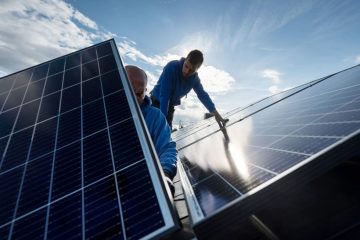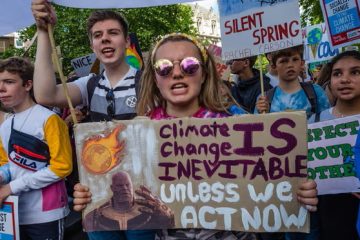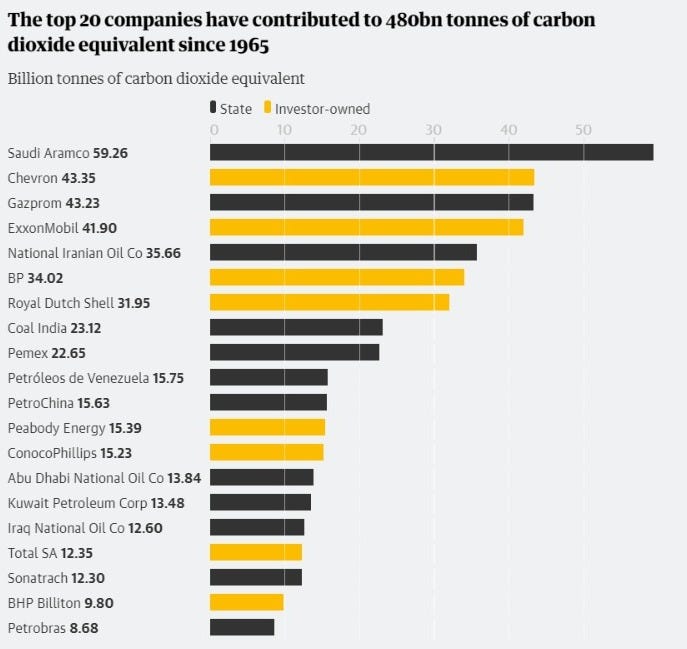The Clean Energy Future Is Arriving Faster Than You Think – The New York Times
Author: New York Times
August 13, 2023
URL: https://www.nytimes.com/interactive/2023/08/12/climate/clean-energy-us-fossil-fuels.html?campaign_id=54&emc=edit_clim_20230814&instance_id=100008&nl=climate-forward%C2%AEi_id=44226454&segment_id=141982&te=1&user_id=8dba6eb1e5a4ae19fd2fc08a25720d88
David Gelles reported from Tulsa, Okla.; Brad Plumer and Jim Tankersley from Washington; and Jack Ewing from New York to see how an accelerated energy transition is playing out.
Across the country, a profound shift is taking place that is nearly invisible to most Americans. The nation that burned coal, oil and gas for more than a century to become the richest economy on the planet, as well as historically the most polluting, is rapidly shifting away from fossil fuels.
A similar energy transition is already well underway in Europe and elsewhere. But the United States is catching up, and globally, change is happening at a pace that is surprising even the experts who track it closely.
Wind and solar power are breaking records, and renewables are [now expected to overtake](https://www.iea.org/reports/renewables-2022/executive-summary) coal by 2025 as the world’s largest source of electricity. Automakers have made electric vehicles central to their business strategies and are openly talking about an expiration date on the internal combustion engine. Heating, cooling, cooking and some manufacturing are going electric.
As the planet registers the highest temperatures on record, rising in some places to levels incompatible with human life, governments around the world are pouring trillions of dollars into clean energy to cut the carbon pollution that is broiling the planet.
“We look at energy data on a daily basis, and it’s astonishing what’s happening,” said Fatih Birol, the executive director of the International Energy Agency. “Clean energy is moving faster than many people think, and it’s become turbocharged lately.”
More than $1.7 trillion worldwide is expected to be invested in technologies such as wind, solar power, electric vehicles and batteries globally this year, according to the I.E.A., compared with just over $1 trillion in fossil fuels. That is by far the most ever spent on clean energy in a year.
Corporations are building new coal mines, oil rigs and gas pipelines. The government continues to award leases [for drilling projects](https://www.nytimes.com/2023/03/12/climate/biden-willow-arctic-drilling-restrictions.html?searchResultPosition=3) on public lands and in federal waters and still subsidizes the industries. After posting record profits last year, leading oil companies are backing away from recent promises to invest more heavily in renewable energy.
There are major challenges involved in adding large amounts of renewable energy to antiquated electric grids and mining enough minerals for clean technologies. Some politicians, including most Republicans, want the country to continue burning fossil fuels, even in the face of overwhelming scientific consensus that their use is endangering life on the planet.
Dozens of conservative groups organized by the Heritage Foundation have [created a policy playbook](https://www.nytimes.com/2023/08/04/climate/republicans-climate-project2025.html?searchResultPosition=2), should a Republican win the 2024 presidential election, that would reverse course on lowering emissions. It would shred regulations designed to curb greenhouse gases, dismantle nearly every federal clean energy program and boost the production of fossil fuels.
About two-thirds of the new investment in clean energy is in Republican-controlled states, where policymakers have historically resisted renewables. But with each passing month, the politics seem to matter less than the economics.
But clean energy became cheap far faster than anyone expected. Since 2009, the cost of solar power has plunged by 83 percent, while the cost of producing wind power has fallen by more than half. The price of lithium-ion battery cells fell 97 percent over the past three decades.
Today, solar and wind power are the least expensive new sources of electricity in many markets, generating 12 percent of global electricity and rising. This year, for the first time, global investors are expected to pour more money into solar power — some $380 billion — than into drilling for oil.
In the United States, President Biden signed a trio of laws during his first two years in office that allocated unprecedented funds for clean energy: A $1 trillion bipartisan infrastructure law provided money to enhance the power grid, buy electric buses for schools and build a national network of electric vehicle chargers. The bipartisan CHIPS and Science Act set aside billions of dollars for semiconductors vital to car manufacturing. And the Inflation Reduction Act, which marks its first anniversary on Aug. 16, is by far the most ambitious attempt to fight climate change in American history.
Combined, the three laws have prompted companies to announce [at least $230 billion in manufacturing investments](https://www.jackconness.com/ira-chips-investments) so far.
Electric vehicles are by far the fastest-growing segment of the auto industry, with record sales of 300,000 in the second quarter of 2023, a 48 percent increase from a year earlier. Teslas are now among the best-selling cars in the country, and Ford has expanded its production of the F-150 Lightning, the electric version of its popular pickup truck, after a surge of initial demand created a waiting list.
Concerns among consumers about the availability of charging stations as well as the cost of some models have helped to cool sales somewhat, [leading some automakers to slash prices.](https://www.nytimes.com/2023/07/17/business/ford-f150-lightning-electric-vehicle-prices.html)
Government action is also helping heavier vehicles go electric. Sales of electric school buses are soaring, largely because of $5 billion in federal grants that can cover 100 percent of the cost for low-income communities. The Postal Service plans to spend n[early $10 billion to purchase 66,000 electric mail trucks](https://www.nytimes.com/2022/12/20/climate/postal-service-electric-trucks.html?searchResultPosition=2) — roughly 30 percent of its fleet — over the next five years.
In an unusual move, seven carmakers — BMW Group, General Motors, Honda, Hyundai, Kia, Mercedes-Benz Group and Stellantis — are spending $1 billion in a joint venture to build 30,000 charging ports on major highways and other locations in the United States and Canada.










